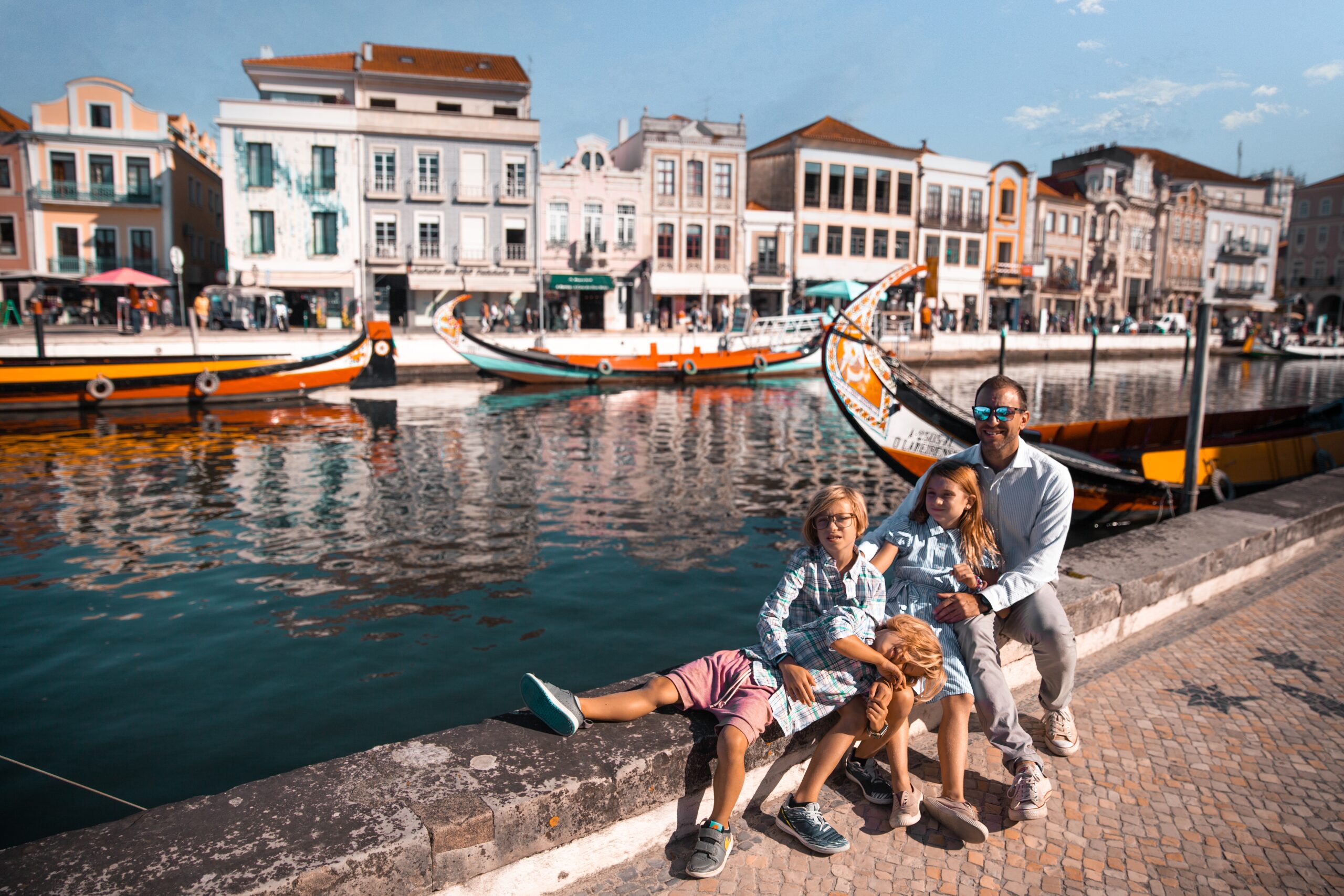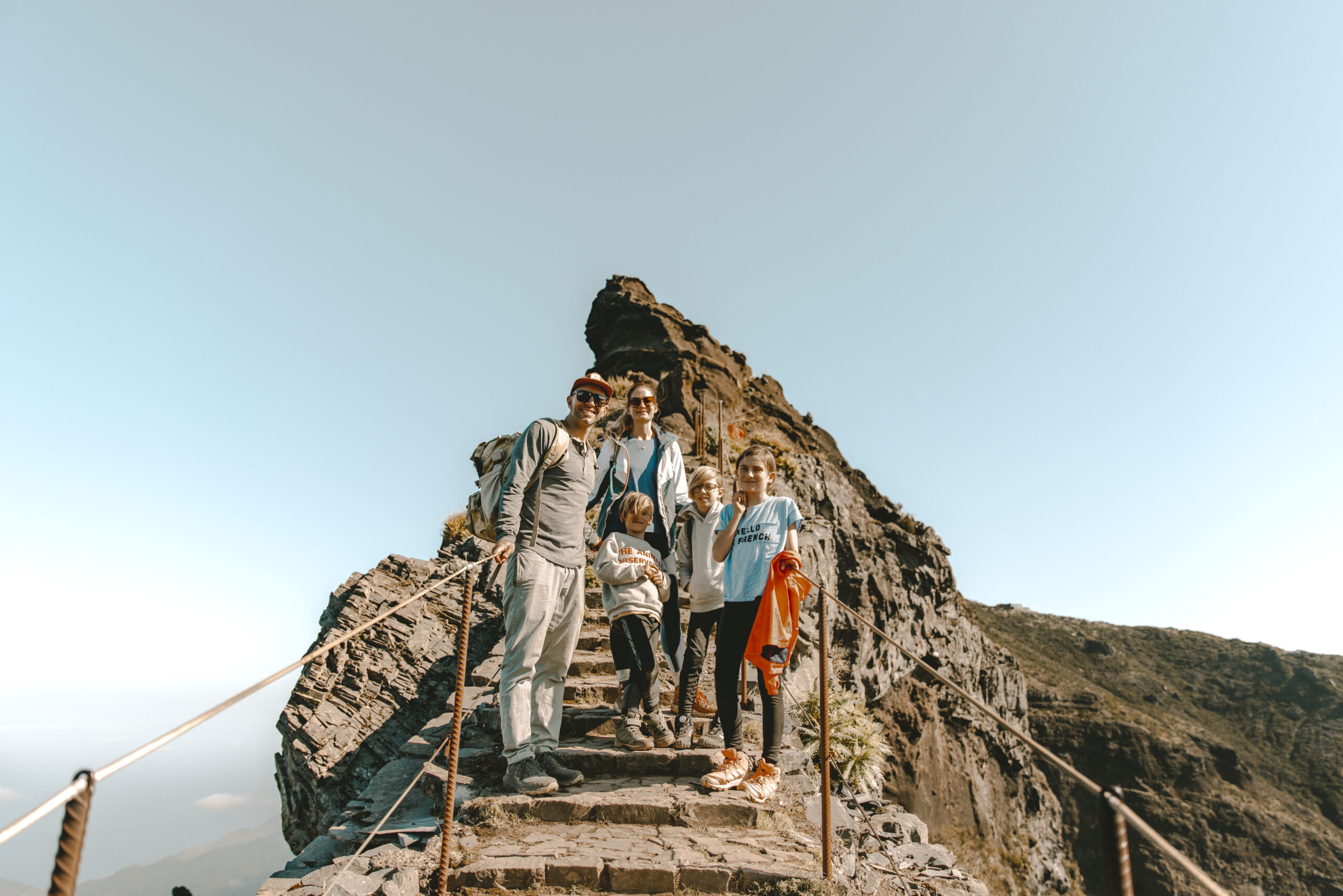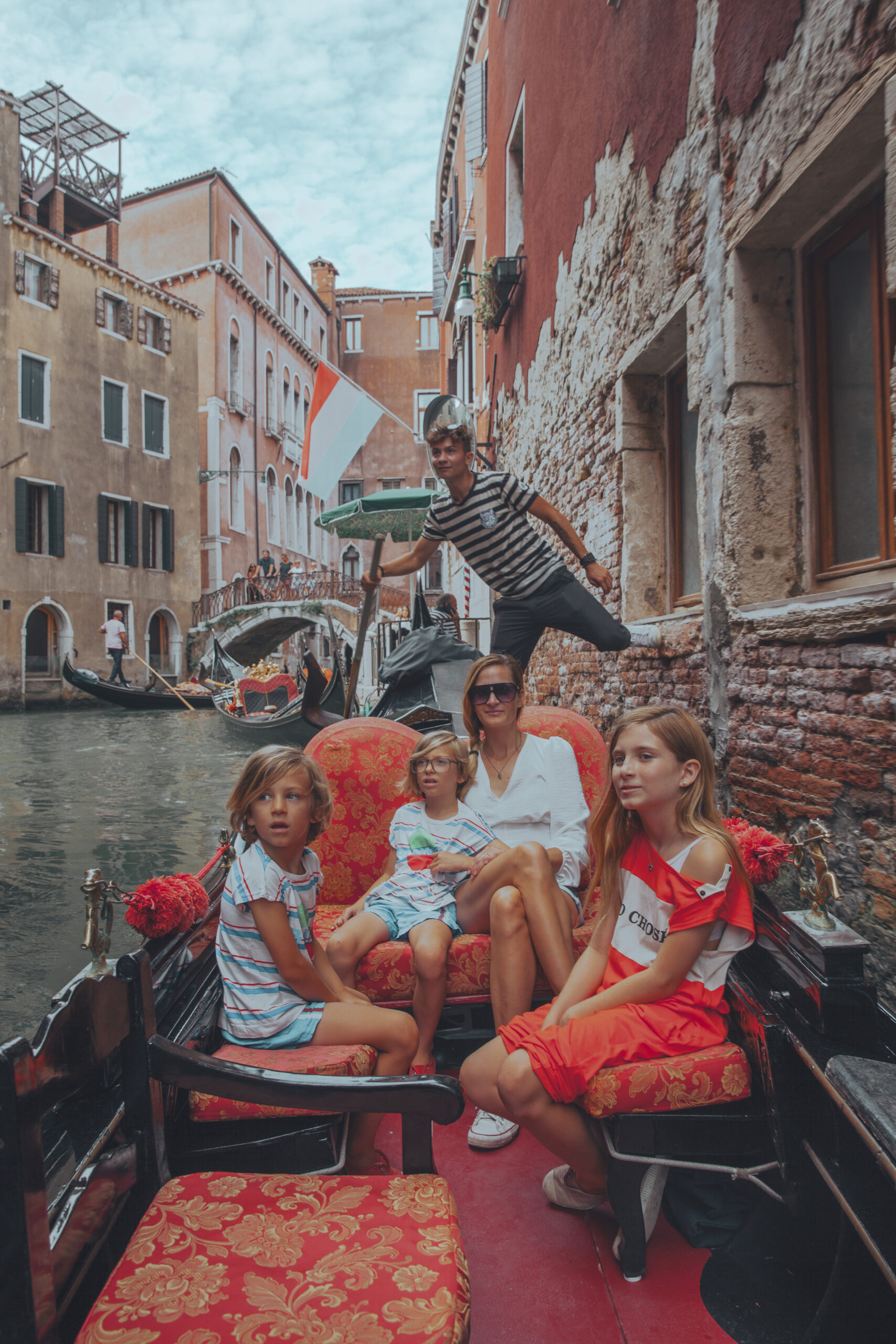Why Spain is a great place for kids
Choosing the city that's right for you
Choosing the visa that's right for you
More than just great weather
Why Spain provides a better quality of life

How we Plan

What we pack
Choosing Travel Insurance
Book Your Hotel
with Booking.com
Book Your Car
with RentalCars.com
Book Your Flight
with Skyscanner.com
Book Your Tour
with GetYourGuide.com

Our Camera Gear

How We Fly
Choosing Your Destination
9 Best Things to do in
Venice
A Journey into the Heart of Italy’s Floating City
- Rialto Bridge
- Acqua Alta
- Gondola
- Wandering
- St. Mark's Church
- St. Mark's Square
- Sunsets
- Murano
- Sighs Bridge

Let’s take a trip through Venice, a city that stole our hearts with its winding canals and timeless beauty. This is a travel guide and a personal invitation to experience Venice as we did – with wonder and awe.
Strolling through its alleys, we found ourselves lost in a world where history whispers from every corner. Each gondola ride was a serene journey, offering a view of Venice that postcards only dream of capturing. And there, standing majestically, was St. Mark’s Basilica, a testament to Venice’s grandeur.
From the lively Rialto Bridge to the tranquil canals, each step was a discovery. My advice? Don’t just visit Venice. Feel it. Let the city’s rhythm guide you to its hidden treasures, be it in the vibrant streets or the serene islands of Murano and Burano.
Remember, the best photo spots are where your heart feels most alive (or where Instagram says they are). Venice in spring? It’s like watching the city bloom into a masterpiece.
This guide is a tip and a sharing of moments and memories, urging you to create your own in the enchanting city of Venice.
Best Things to do in Venice
Venice, a city where each day unfolds like a living canvas, invites you to immerse yourself in its timeless beauty from dawn until dusk. Begin your day marveling at the sunrise over St. Mark’s Basilica, then meander through the bustling Rialto Market.
Your visit to Venice, enriched by these experiences, becomes a journey through a city that gracefully bridges the gap between its historic past and vibrant present.
Without further ado, here are the 9 best things to do in Venice:
1. Ponte di Rialto: The Heartbeat of Venice
Price:
There’s no charge to simply walk across the bridge, so visiting the Ponte di Rialto is completely free! However, if you’re interested in exploring the shops on the bridge or taking a gondola ride underneath it, you’ll need to pay for those activities separately.
Best time to visit:
- Early mornings (before 8:30 am): This is the quietest time to visit, when there are fewer crowds and you can enjoy the bridge’s beauty in peace.
- Shoulder seasons (spring and fall): The weather is pleasant during these times, and the crowds are smaller than in the summer.
- Weekdays: Weekends tend to be more crowded, so if you can, try to visit on a weekday.
How to get there:
- Vaporetto: This is the most popular way to get to the Ponte di Rialto. Take vaporetto line 1 and get off at the Rialto stop.
- Walking: The bridge is easily walkable from many parts of Venice. If you’re coming from Piazza San Marco, it’s a pleasant 15-minute walk across the Mercerie.
- Water taxi: This is a more expensive option, but it’s a fun way to arrive at the bridge in style.
Walking across the Rialto Bridge during our Venice visit was like stepping into a living, breathing piece of history. Each shop along the bridge was a tiny world of its own, filled with local crafts and souvenirs. Personally, I remember the awe I felt, watching the sunset from the bridge – the Grand Canal below me turned into a golden tapestry, a scene so captivating it felt surreal.
Rialto in the early morning was a different kind of magic. The quiet, the soft light, and the gentle sounds of the city waking up – it was Venice unmasked, raw and beautiful. And the Rialto Market nearby? It’s a bustling, vibrant spot where the real Venice comes alive. Starting a gondola ride from here was like cruising through the veins of the city, seeing its heart up close.
This iconic bridge, a must-visit on any Ultimate Venice Guide, is a highlight for every traveler. With no entry fee, it’s a gem. The Ponte di Rialto is a gateway to the soul of Venice.
2. Libreria Acqua Alta: A Book Lover's Dream
Price
The good news is that there’s no entry fee to visit Libreria Acqua Alta! You can browse the books, take photos, and even cuddle the resident cats for free. However, if you do want to purchase a book or souvenir, be sure to bring some money.
Best time to visit:
- Early mornings (before 9:00 am): This is the quietest time to visit, when there are fewer crowds and you can enjoy the bookstore’s unique atmosphere in peace.
- Weekdays: Weekends tend to be more crowded, so if you can, try to visit on a weekday.
- Shoulder seasons (spring and fall): The weather is pleasant during these times, and the crowds are smaller than in the summer.
- Right before closing (around 7:30 pm): Another option to avoid the crowds is to visit right before closing time.
How to get there:
- Walking: Libreria Acqua Alta is located in the Sestiere di Castello district, about a 15-minute walk from Piazza San Marco. You can follow the signs or use a map to find your way.
- Vaporetto: Take vaporetto line 1 and get off at the Rialto stop. From there, it’s a short walk to the bookstore.
- Water taxi: Again, this is a more expensive option, but it’s a fun way to arrive at the bookstore in style.
Imagine a bookstore where books and gondolas come together in a whimsical dance. That’s Libreria Acqua Alta. Located in the heart of Venice, the bookstore is a world of stories waiting to be discovered. Books piled in gondolas, bathtubs, and even a full-sized gondola, each corner telling its own tale.
Enjoy wandering through the maze of books, each turn revealing something more enchanting than the last. From classic literature to rare finds, the air is thick with the scent of old pages. The back door opens to a charming view of a canal, a perfect backdrop for a quiet reading moment.
3. A Gondola Ride: Venice's Classic Experience
Price:
- A standard 30-minute gondola ride costs €80 during the day (8:00 AM to 7:00 PM) and €100 at night (7:00 PM to 8:00 AM).
- Each additional 20 minutes is €40 during the day and €50 at night.
- The price is per gondola, not per person, so you can split the cost with up to five other passengers.
- Pre-booking a gondola ride online may come with an extra fee.
Best time to visit:
- Early mornings (before 8:30 am): Enjoy the tranquility of the canals with minimal crowds and capture stunning sunrise photos.
- Shoulder seasons (spring and fall): Pleasant weather and smaller crowds compared to the peak summer months.
- Weekdays: Avoid the weekend rush and experience a more peaceful gondola ride.
- Sunset: Witness the magical transformation of the city bathed in golden hues for a romantic and unforgettable experience.
How to get there:
Gondolas can be found at various gondola stations throughout Venice, particularly in popular tourist areas like St. Mark’s Square and the Rialto Bridge. You can simply approach a gondolier, though pre-booking online is recommended, especially during peak season, to avoid queues and secure your desired time slot.
There’s something magical about gliding through Venice in a gondola. A gondola ride is a step back in time, a way to experience the city as it’s been for centuries. The gentle lap of water against the boat, the narrow canals flanked by ancient buildings, it’s like being in a living painting.
I remember our gondola ride like it was yesterday. The gondolier, in his striped shirt, was not just a guide but a storyteller, weaving tales of Venice’s past as we passed by historical landmarks.
Gondola rides in Venice can vary in price, but the experience is priceless. For a more intimate experience, choose a gondola ride in the evening when the canals are less crowded. It’s a splurge, but it’s the essence of Venice.
Floating through the city, feeling its pulse, seeing its hidden corners – a gondola ride is an unmissable experience. It’s the heartbeat of Venice, offering a perspective of the city that you can’t get any other way.
4. Getting Lost in Venice's Streets
Price:
It’s completely free! The beauty of getting lost is that you’re not following a set itinerary or paying for specific attractions. Just put on your walking shoes and let the city guide you.
Best time to visit:
Any time is a good time! Venice has its own unique charm in every season:
- Spring: Enjoy pleasant weather, blooming flowers, and smaller crowds.
- Summer: Embrace the vibrant atmosphere, gondola rides, and longer days.
- Fall: Witness the city bathed in warm hues, with comfortable temperatures and fewer tourists.
- Winter: Experience a quieter Venice, marvel at the architecture without crowds, and cozy up in charming cafes.
How to get there:
Simply step out of your accommodation and start exploring! You can reach any point in Venice on foot, hopping on a vaporetto (water bus) for longer distances, or even getting lost through narrow alleyways and hidden canals.
Wandering aimlessly through Venice’s streets is a delight in itself. Each alley and square tell a story, each bridge leads to a new discovery. I remember losing myself in these paths, away from the maps and guides, and each turn revealed a new facet of Venice – a quiet canal, a local bakery, or a hidden art gallery.
The streets of Venice are a labyrinth of beauty and mystery. You’ll stumble upon charming cafes and boutiques, feeling the true essence of the city. The best part? It’s completely free. Just let your curiosity lead the way.
The ideal times for these explorations are early mornings or late afternoons when the streets are less crowded. Spring and fall offer the perfect weather for long, leisurely walks.
Losing yourself in Venice is about finding the real city. It’s here, away from the well-trodden paths, that Venice truly reveals itself.
5. Saint Marco Basilica: A Journey Through History and Art
Price:
- Entry to the Basilica itself is free. This allows you to explore the main church area and admire the stunning mosaics and golden interiors.
- Skip-the-line tickets: To avoid the long queues, especially during peak season, consider purchasing skip-the-line tickets. These typically cost around €25-35.
- Other areas: Some additional areas within the Basilica require separate tickets, such as the Treasury (€5), the Pala d’Oro (€2), and the Loggia dei Cavalli (€3).
Best time to visit:
- Early mornings (before 9:30 am): Enjoy the quiet beauty of the Basilica with fewer crowds and better lighting for photos.
- Weekdays: Avoid the weekend rush, especially during peak tourist season (May to September).
- Shoulder seasons (spring and fall): Pleasant weather and smaller crowds compared to the peak summer months.
- Special events: If you’re interested in witnessing unique ceremonies or traditions, check the Basilica’s calendar for events like Byzantine chants or the Feast of San Marco (April 25th).
How to get there:
- Walking: Mark’s Basilica is located in the heart of Venice, right off St. Mark’s Square. It’s easily walkable from most central areas of the city.
- Vaporetto: Take vaporetto line 1 and get off at the San Marco stop, which is right in front of the Basilica.
- Water taxi: This is a more expensive option, but it’s a fun and scenic way to arrive at the Basilica.
Visiting Saint Marco Basilica is a journey through the rich tapestry of Venetian history and art. Its breathtaking façade and the golden mosaics inside tell centuries-old stories. I was in awe, standing in the vast, ornate interior, surrounded by the intricate art and history.
Saint Mark’s Basilica, Venice’s cathedral church, has a rich history dating back to the 9th century. Originally built to house the relics of Saint Mark the Evangelist, which were smuggled from Alexandria, the basilica was reconstructed in the 11th century in its current stunning Byzantine form.
It symbolizes Venice’s wealth and power and is famous for its opulent design and gold ground mosaics. Over the centuries, it has been embellished with treasures from around the world, reflecting Venice’s past as a major maritime power. The basilica is not only a religious symbol but also a representation of Venice’s artistic and cultural achievements.
6. Piazza San Marco: Venice's Open-Air Museum
Strolling through the piazza itself is completely free! You can wander around, soak in the atmosphere, and admire the architectural marvels without spending a dime. However, be prepared for the temptation of:
- Cafes and restaurants: Lining the edges of the piazza, these offer prime people-watching and delicious Italian fare, but come at a premium. Expect to pay €15-€25 for a coffee and pastry, and upwards of €50 for a full meal.
- Doge’s Palace: For €25, step into the opulent chambers and corridors of Venetian power, a must for history buffs.
- Mark’s Basilica: Free entry to the main church, or splurge on €25-€35 skip-the-line tickets to avoid the queues.
- Bell Tower: Climb the 324 steps (no elevator!) for breathtaking panoramic views for €10.
Best time to visit:
- Early mornings (before 9:00 am): Beat the crowds and capture the piazza bathed in golden sunlight.
- Shoulder seasons (spring and fall): Pleasant weather and smaller crowds compared to the peak summer months.
- Weekdays: Avoid the weekend rush, especially during tourist season (May to September).
- Special events: Experience the piazza come alive during Carnival, New Year’s Eve celebrations, or the Biennale art exhibition.
How to get there:
- Walking: Most central areas of Venice are within walking distance. It’s a pleasant stroll, allowing you to soak in the city’s charm.
- Vaporetto: Take vaporetto line 1 and get off at the San Marco stop, right in front of the piazza. This is the most convenient option, especially if you’re coming from farther away.
- Water taxi: A pricier but undeniably romantic way to arrive, gliding through the canals and docking right at the piazza’s edge.
Piazza San Marco, the grand square of Venice, is like an open-air museum. Walking here, I felt surrounded by centuries of history, with the Basilica di San Marco and the Campanile standing tall. The square buzzes with life – street artists, cafes, and, of course, the famous pigeons.
Piazza San Marco, often known as Saint Mark’s Square, is steeped in history and is the principal public square of Venice, Italy. It has been the city’s main gathering place since the 9th century and is renowned for its stunning architecture and cultural significance.
The square is dominated by the magnificent Saint Mark’s Basilica, the Doge’s Palace, and the Campanile. Over the centuries, Piazza San Marco has been a center for social, religious, and political activities in Venice and has witnessed many significant events in the city’s history. Its architecture and layout are a testament to Venice’s historical power and influence.
7. Sunsets on the Canals: Venice's Evening Spectacle
Price:
Sunsets themselves are completely free to enjoy! Just find a good spot along a canal and soak in the show. However, depending on your chosen vantage point, additional costs might come into play:
- Gondola ride: For a truly Venetian experience, consider a gondola ride during sunset. Prices typically range from €80-€100 for a 30-minute ride, but the golden hues reflecting off the water and the gentle swaying of the gondola are priceless.
- Restaurants and bars: Many waterfront restaurants and bars offer stunning sunset views with their outdoor seating. Expect to pay for drinks and food, but the ambiance and setting are worth it.
- Bridges: Public bridges like the Rialto Bridge or Accademia Bridge offer free viewing points, but be prepared for crowds, especially during peak season.
Best time to visit:
- Spring and fall: Pleasant weather and manageable crowds make these seasons ideal for enjoying outdoor sunsets.
- Summer evenings: Longer daylight hours allow you to catch the sunset later, but be prepared for larger crowds and warmer temperatures.
- Clear skies: Cloudy days will obviously dampen the visual impact, so keep an eye on the weather forecast.
How to get there:
The beauty of Venetian sunsets is that they’re accessible from almost anywhere near a canal. Here are some popular options:
- Rialto Bridge: A classic choice offering panoramic views of the Grand Canal and surrounding gondolas.
- Fondamenta Zattere: This waterfront promenade on the Giudecca Island offers stunning views across the canal towards San Marco.
- Accademia Bridge: Another picturesque bridge with beautiful views of the Grand Canal and the Salute Church.
- Mark’s Square: While not directly on a canal, the piazza offers a unique perspective of the sunset reflecting off the Basilica’s golden facade.
Experiencing a sunset over Venice’s canals is unforgettable. The sky, fiery orange, reflecting on the water, turning the canals into ribbons of light. It’s a daily spectacle that transforms the city into a canvas of colors.
Sunsets on the canals in Venice are special because they offer a unique interplay of light, water, and architecture. As the sun sets, the sky and the water display a spectrum of colors, from warm oranges and pinks to deep purples and blues.
This natural light show is further enhanced by the reflections off the water, which illuminate the historic buildings and bridges lining the canals. The combination of the setting sun, the historic Venetian architecture, and the gentle movement of the water creates a tranquil and picturesque atmosphere, making these moments truly magical and memorable. The Dorsoduro area offers some great views, especially near the Accademia Bridge.
Watching the sun set in Venice is a moment of pure enchantment, a blend of nature and art, reminding you why this city has captured the hearts of so many.
8. Trip to Murano: A Colorful Escape
Price:
Murano is free to explore itself, with its charming canals, colorful houses, and quaint bridges. However, be prepared for the allure of:
- Glassblowing demonstrations: Witness the mesmerizing artistry firsthand at various glass factories and studios. Some offer free demonstrations, while others may charge a small fee (around €10-€20).
- Glass museums: Delve into the history and techniques of Murano glassmaking at museums like the Museo del Vetro (around €10 entry fee).
- Shopping: From delicate jewelry and ornaments to intricate sculptures and tableware, Murano glass is a world-renowned treasure. Prices can vary widely depending on the piece and its complexity.
Best time to visit:
- Shoulder seasons (spring and fall): Pleasant weather, smaller crowds, and lower prices compared to peak summer.
- Weekdays: Avoid the weekend rush, especially during tourist season (May to September).
- Morning or afternoon: Early mornings offer a quieter experience, while afternoons provide warm sunlight for photos.
How to get there:
- Vaporetto: The most popular and economical option. Take vaporetto line 4.1 or 4.2 from Fondamente Nove or San Zaccaria, with fares starting around €7.50 one way. The journey takes about 20-30 minutes.
- Water taxi: A faster and more scenic, but pricier, option. A private water taxi from St. Mark’s Square can cost around €80-€100 one way, but the ride through the canals is an unforgettable experience.
A trip to Murano is like entering a world of glass and color. This island, famous for its glassmaking, is a short vaporetto ride from Venice. I was mesmerized by the glassblowing demonstrations, showcasing centuries-old techniques. The vibrant glass artworks, adorning the streets and shops, are a feast for the eyes.
The history of Murano, an island in the Venetian Lagoon, is deeply intertwined with the art of glassmaking. This renowned tradition began around the 13th century when the Venetian Republic, fearing fire and destruction of the city’s mostly wooden buildings, ordered all glassmakers to move their foundries to Murano.
This move effectively created a hub for glass production. Over the centuries, Murano’s glassmakers became highly esteemed, developing and refining techniques such as crystalline glass, enameled glass (smalto), and multicolored glass (millefiori), and inventing mirrors.
The island became a center of luxury glass production, famed for its quality and beauty, which continues to be celebrated worldwide.
9. The Bridge of Sighs
Price:
The good news is, simply admiring the Bridge of Sighs from the outside is completely free! You can stroll along the canals, snap photos from various angles, and soak in its romantic atmosphere without spending a dime.
Best time to visit:
Early mornings (before 8:30 am): Beat the crowds and enjoy the bridge in peaceful tranquility. The golden light of sunrise adds a touch of magic to the scene.
- Shoulder seasons (spring and fall): Pleasant weather and smaller crowds compared to the peak summer months.
- Weekdays: Avoid the weekend rush, especially during tourist season (May to September).
- Sunset: Witness the bridge bathed in a warm glow, creating a truly romantic and unforgettable experience.
How to get there:
The Bridge of Sighs is conveniently located in the heart of Venice, making it easily accessible by foot or water transportation:
- Walking: Follow the Grand Canal from St. Mark’s Square, admiring the Doge’s Palace and other historic landmarks along the way. It’s a pleasant walk that takes about 15 minutes.
- Vaporetto: Take vaporetto line 1 and get off at the San Marco Vallaresso stop, right next to the bridge. This is the most convenient option if you’re coming from farther away.
The Bridge of Sighs, with its ornate white limestone and haunting history, is one of Venice’s most iconic landmarks. This enclosed bridge, passing over the Rio di Palazzo, connects the Doge’s Palace to the historic prisons. Its name, inspired by the sighs of prisoners glimpsing their last view of Venice, adds a poignant touch to its beauty.
Take a leisurely walk along Riva degli Schiavoni, the spacious promenade by the Venetian Lagoon, close to the Doge’s Palace. As you meander over the Ponte della Paglia, make sure to glance down the canal for a classic view of the Bridge of Sighs, one of Venice’s most iconic sights.
Standing before the Bridge of Sighs is a moment that embodies Venice’s blend of beauty and history, leaving a lasting impression on every visitor.
What shouldn't you miss in Venice?
Don’t miss the iconic St. Mark’s Basilica, the romantic gondola rides through the canals, the historic Ponte di Rialto, and the unique Libreria Acqua Alta. The enchanting sunsets on the canals are also a must-see.
Is 2 days in Venice enough?
Two days in Venice can be enough to see the major sights, but it might feel rushed. Ideally, allow at least 3 days to fully experience the city’s charm, including lesser-known neighborhoods.
What is worth seeing in Venice?
Beyond the well-known landmarks, explore the vibrant neighborhoods, visit the glass-blowing island of Murano, and see the Bridge of Sighs. The quieter canals and hidden squares offer a more authentic glimpse of Venice.
What is the prettiest area in Venice?
Many consider the area around Piazza San Marco and the Grand Canal to be the prettiest. However, the beauty of Venice also lies in its lesser-known areas like Cannaregio and Dorsoduro.
Which part of Venice is best to stay?
For first-time visitors, staying near Piazza San Marco or the Rialto Bridge is convenient. Those looking for a quieter experience might prefer the Dorsoduro or Cannaregio districts.
Final Thoughts on the Best Things to do in Venice
In conclusion, Venice, with its intricate web of canals, historic bridges, and timeless architecture, offers a myriad of experiences that blend the allure of history with the charm of modern-day Italy. From the iconic Ponte di Rialto to the serene beauty of sunsets on the canals, each moment spent in this enchanting city is a treasure.
Whether you’re wandering through the streets, exploring the artistic legacy of Murano, or basking in the spiritual magnificence of Saint Marco Basilica, Venice captivates and delights. This guide aims to serve as your compass, directing you to the heart of Venice’s magic, ensuring your journey is as unforgettable as the city itself.
As you plan your trip, remember that Venice is a destination and an experience that stays with you, long after you’ve left its shimmering waters.
